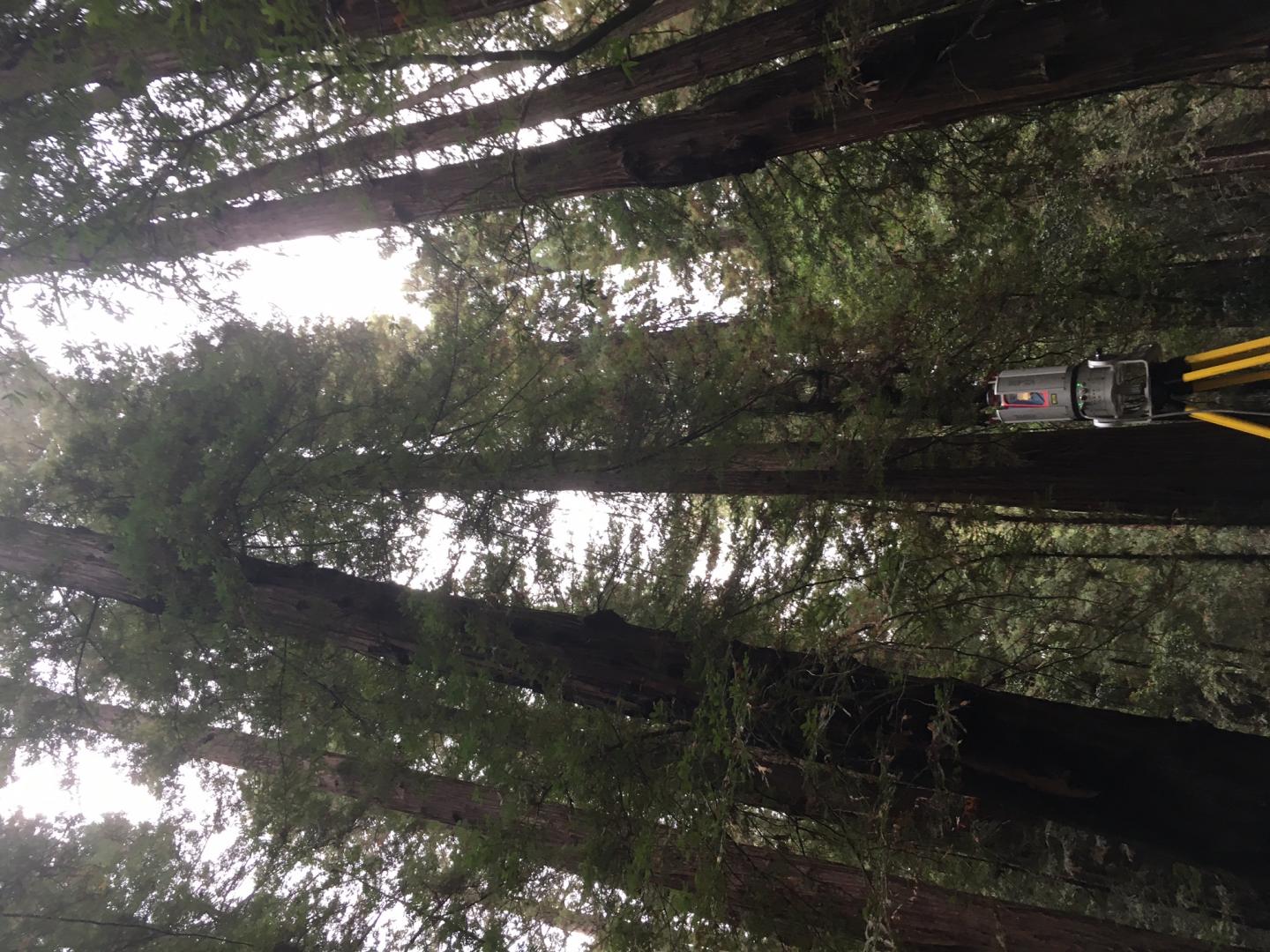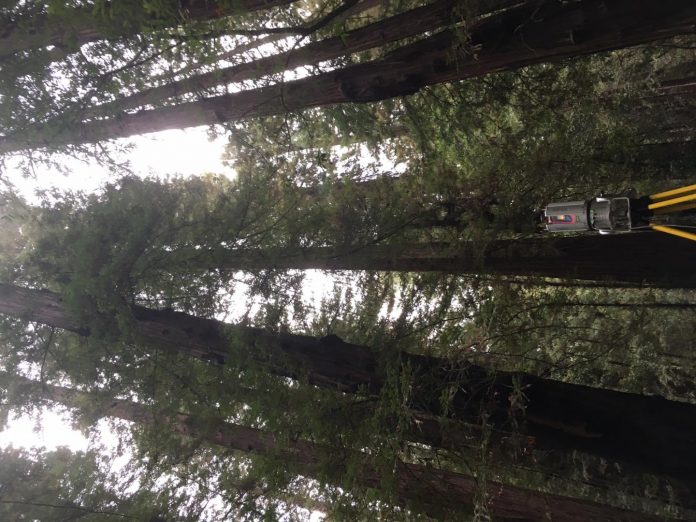
Photo: Laser technology has been used to measure the volume and biomass of giant Californian redwood trees for the first time, records a new study by UCL researchers.
view more
Credit Image: Mat Disney
Laser technology has been used to measure the volume and biomass of giant Californian redwood trees for the first time, records a new study by UCL researchers.
The technique, published in Scientific Reports, offers unprecedented insights into the 3D structure of trees, helping scientists to estimate how much carbon they absorb and how they might respond to climate change.
Professor Mat Disney (UCL Geography), lead author on the study, said: “Large trees are disproportionately important in terms of their above ground biomass (AGB) and carbon storage, as well as their wider impact on ecosystem structure. They are also very hard to measure and so tend to be underrepresented in measurements and models of AGB.
“We show the first detailed 3D terrestrial laser scanning (TLS) estimates of the volume and AGB of large coastal redwood trees (Sequoia sempervirens) from three sites in Northern California, representing some of the highest biomass ecosystems on Earth.”
The research contributes to an aspect of climate change research with increasing focus.
Professor Disney add: “Big questions within climate science in response to rising CO2 levels are whether and where more trees should be planted and how best to conserve existing forests. In order to answer these questions, scientists first need to understand how much carbon is stored in different tree species.”
Estimating the size and mass of very large trees is an extremely difficult task. Previously, trees could only be weighed by cutting them down or by using other indirect methods such as remote sensing or scaling up from manual measurements of trunk diameter, both of which have potentially large margins of error.
Working with colleagues at NASA, and with support from the NASA Carbon Monitoring System programme, the researchers used ground-based laser measurements to create detailed 3D maps of the redwoods. NASA’s new space laser mission, GEDI, is mapping forest carbon from space, and the GEDI team are using Professor Disney’s work to test and improve the models they use to do this.
The trees scanned include the 88-metre tall Colonel Armstrong tree, with a diameter-at-breast height of 3.39 m, which they estimate weighs around 110 tons, the equivalent of almost 10 double-decker buses.
The researchers compared the TLS estimates with other methods and found that their estimates correlated with those of 3D crown mapping, a technique pioneered by American botanist Stephen C. Sillett that involves expert climbers scaling giant redwoods to manually record fine details about their height and mass.
Professor Disney’s team found that their AGB estimates agreed to within 2% of the records from crown mapping. Crucially, they also found that both these 3D methods show that these large trees are more than 30% heavier than current estimates from more indirect methods.
The researchers recommend that laser technology and 3D crown mapping could be used to provide complementary, independent 3D measures.
Assistant Professor Laura Duncanson (NASA Earth Sciences & University of Maryland), last author on the study and member of the NASA GEDI science team, said: “Estimating the biomass of large trees is critical to quantifying their importance to the carbon cycle, particularly in Earth’s most carbon rich forests. This exciting proof of concept study demonstrates the potential for using this new technology on giant trees – our next step will be to extend this application to a global scale in the hopes of improving GEDI’s biomass estimates in carbon dense forests around the world.”
###
The research was funded by NASA, Natural Environment Research Council and UCL Geography.
Notes to Editors
For more information or to speak to the researchers involved, please contact Natasha Downes, UCL Media Relations. T: +44 (0) 20 3108 3844 / +44 (0) 7990 675 947, E: [email protected]
Mathias Disney, Andrew Burt, Phil Wilkes, John Armston, and Laura Duncanson. ‘New 3D measurements of large redwood trees for biomass and structure’ will be published in Scientific Reports on 15 October at 10am UK time.
DOI will be: 10.1038/s41598-020-73733-6
URL will be: https:/
Images and credits are available here:
About UCL – London’s Global University
UCL is a diverse community with the freedom to challenge and think differently.
Our community of more than 41,500 students from 150 countries and over 12,500 staff pursues academic excellence, breaks boundaries and makes a positive impact on real world problems.
We are consistently ranked among the top 10 universities in the world and are one of only a handful of institutions rated as having the strongest academic reputation and the broadest research impact.
We have a progressive and integrated approach to our teaching and research – championing innovation, creativity and cross-disciplinary working. We teach our students how to think, not what to think, and see them as partners, collaborators and contributors.
For almost 200 years, we are proud to have opened higher education to students from a wide range of backgrounds and to change the way we create and share knowledge.
We were the first in England to welcome women to university education and that courageous attitude and disruptive spirit is still alive today. We are UCL.
http://www.
Find out how UCL is helping lead the global fight against COVID-19 http://www.
TDnews (tunisiesoir.com)















